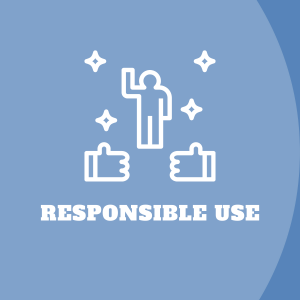According to GSMA real-time intelligence data, there are currently 5.17 billion people in the world who own a mobile device. And with many of us possessing more than one connected device, studies show that there are now over 9.42 billion mobile connections worldwide, surpassing the current world population of 7.75 billion.
The Independent reported that a survey found one in four children under the age of six having a smartphone and nearly half of them spend up to 21 hours per week on their devices. A report from Common Sense Media found that the average amount of screen time is 4.5 hours per day for 8 – 12-year-olds, while teens spend up to 9 hours per day on-screen content.
With the continued development and advancement of technology, one can only expect the use of these mobile devices to increase over time. So, the question arises: “How should we raise this generation of digital natives in our technologically saturated society today?

Tip 1:
Technology is today at the forefront of all that we do, both in our workplace and our personal lives. This has been made glaringly evident during the recent COVID-19 pandemic when most countries all over the world went into lockdown, with adults working from home and children adapting to virtual learning
We have to recognise that this is now the new normal. In the 21st century classroom, students will be expected not only to consume information but create, produce and communicate information in creative and innovative ways to demonstrate their learning.
As parents, we need to keep an open mind and not fear it, but rather use the opportunity to embrace the positives about new technology, while teaching our children skills to mitigate the risks.

Tip 2:
While children may not always follow their parents’ advice, they almost never fail to model the behaviour of their parents. Easy ways to get started are:
- Limiting our own screen time, while creating more opportunities for family time or physical activity
- Setting boundaries and rules around the use of devices – such as, no devices during meal times, or asking permission before downloading apps
- Discuss mutually agreeable consequences for rule violations, and follow these up with action

Tip 3:
How children spend their screen time is just as important, if not more so, than how much time they spend. Teaching them digital common sense and responsibility is essential in guiding them to choose the right online activities to engage in. Have open conversations with them about privacy, inappropriate content, cyberbullying, and online predators
With everything that technology offers, we should inculcate a culture of ‘create’ instead of ‘consume’.
- Instead of mindless watching someone else’s YouTube channel, why not create their own?
- Encourage your budding musician to record their own songs through apps like Garage Band.
- Set a task for your up-and-coming screenwriter/producer to create a mini-movie or film the next family event.
- Challenge your teenager to code their own gaming app or design a social media campaign for a community service project.

Tip 4:
Fundamentally, technology is neither good nor bad — it is how we use it that makes the difference. There are many aspects of technology for good which we can focus upon, and in turn, turn our children’s attention to.
Let’s marvel at how our children can experience a space station up close and personal. Celebrate how geographical borders are no longer a barrier to communication because our children can conduct Skype sessions with their peers at a school halfway across the world. Share in the experience of their learning at school through platforms like SeeSaw and Explain Everything.

Tip 5:
Our end objective should be to help children self-regulate and make wise decisions about their technology use and consumption.
- Remind them to be kind – think before saying or doing anything online that could hurt or humiliate anyone. Respect is key.
- Encourage them to think about the future – online content is forever. What they post is not just for now, so how will they want to be seen in the future when they are aiming for that scholarship or a job?
- Knowing age-appropriate apps – while it is great to connect with friends over a chat or a game, they also need to know that if not careful, this opens the door to strangers, inappropriate content and cyberbullying.
Think about their maturity levels and their offline behaviours when you are speaking to them about setting boundaries. Consider questions such as:
- Do they understand online safety and are they able to make good decisions?
- Do they display the appropriate maturity and behaviour in managing their social media usage?
- Can they identify potential online risks and do they know what to do about them?
- Are they able to maintain a reasonably balanced online and offline behaviour?
To dismiss technology as either a boon or a bane without fully understanding its benefits and risks is too simplistic. If we empower our children to make informed decisions about how to use digital tools, balanced technological engagement can be achieved without compromising other important aspects of their life. This in turn will prepare them for their future in a world where living with technology has become part of our everyday existence.
Adapted from the article “Raising Tech-Healthy Kids” by Dr Gerard Louis, CEO of HELP Education Services (HES) & Mr Jamie Speakman, Learning Innovation Coordinator at HELP International School
——————–








